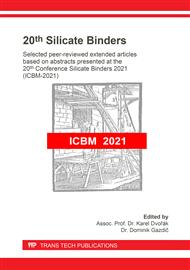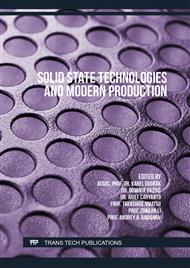p.73
p.81
p.89
p.97
p.103
p.109
p.117
p.123
p.129
Influence of Nitrate Species A(NO3)2 on Physico-Mechanical Properties of the Aluminosilicate Adhesives for Wooden Structure
Abstract:
The article presents the results of studies of the positive effect of compounds of the type A(NO3)2, as modifiers of the aluminosilicate adhesive of the composition Na2O∙Al2O∙6SiO2∙20H2O, on increasing the strength of adhesive joints of wood of various species. The grade strength increases 1.39 times compared to the strength of the adhesive that does not contain these compounds. According to the degree of influence on the shear strength along the fibers, the additives can be ranked in the series Ba (NO3)2 > Ca (NO3)2 > Mg (NO3)2 > 95%Ca (NO3)2+5%NH4NO3. It is noted that for gluing samples from a pine substrate, it is advisable to add magnesium and barium nitrates to the aluminosilicate glue in an amount of 1% (by weight); beech wood - calcium and barium nitrates in the amount of 1 and 0.5% (by weight); oak wood - calcium nitrates in an amount of 1% (by mass), a mixture of nitrates in an amount of 0.5% (by mass) and barium nitrate in an amount of 0.5 and 1.5% (by mass). According to the influence on the strength of adhesive joints, the substrates can be ranked in the order beech > oak > pine. Further studies will present the results of the effect of alkaline earth metal nitrates on the deformation properties of adhesive joints and on rheokinetic and colloid-chemical properties.
Info:
Periodical:
Pages:
129-136
Citation:
Online since:
October 2022
Price:
Сopyright:
© 2022 Trans Tech Publications Ltd. All Rights Reserved
Share:
Citation:



